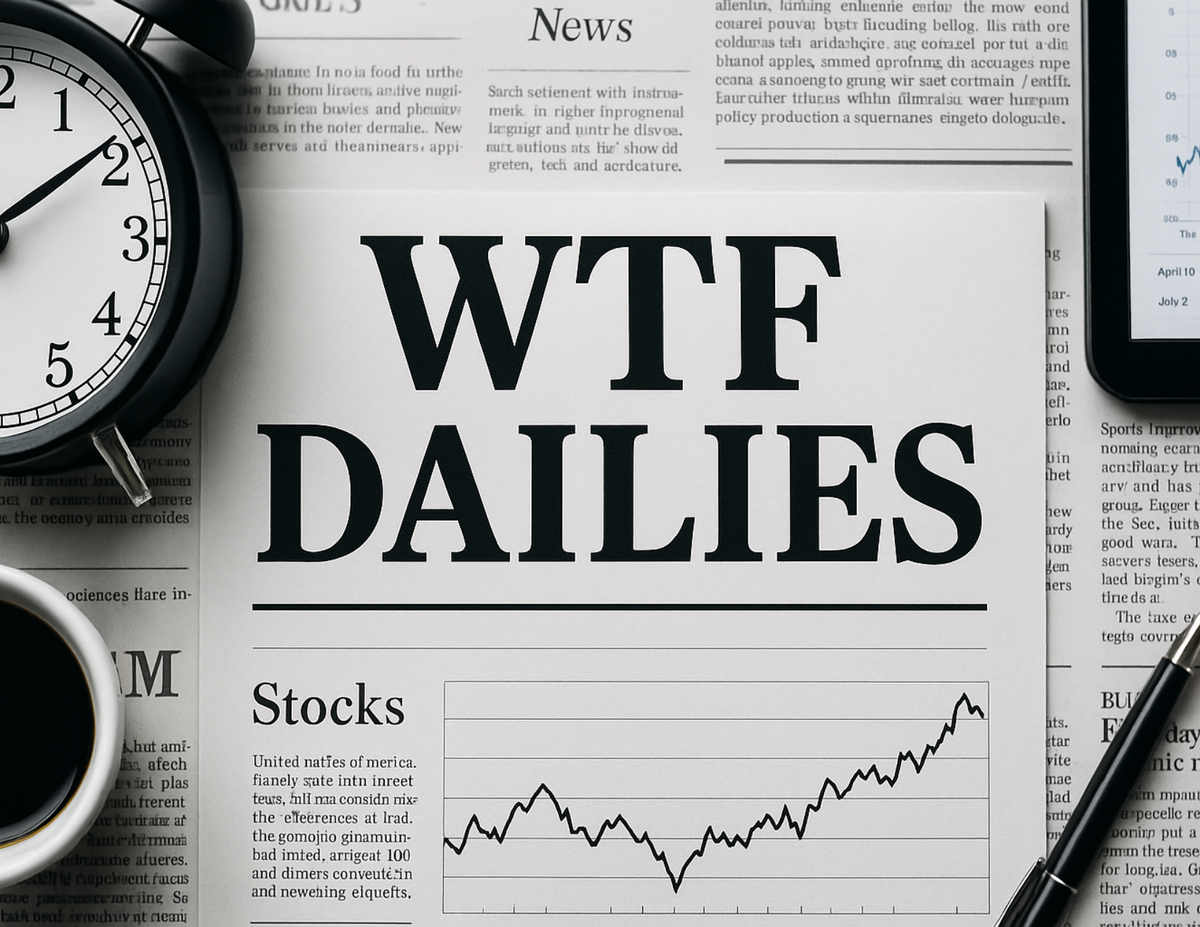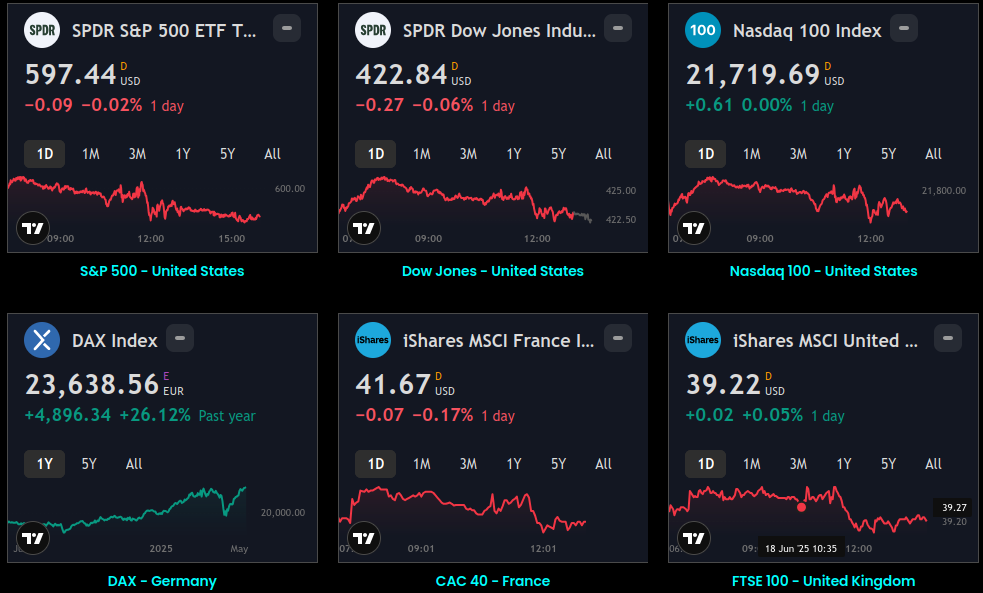WTF Dailies August 4, 2025
US stock futures made gains Sunday evening as Wall Street regrouped amid a slew of fresh headwinds, including disappointing labor data and continuing trade uncertainty.

- US stock futures made gains Sunday evening as Wall Street regrouped amid a slew of fresh headwinds, including disappointing labor data and continuing trade uncertainty.
- The declines were exacerbated Friday after July’s jobs report came in weaker than expected, and previous months' tallies were revised sharply lower, flipping the narrative on the labor market's strength. It led President Trump to lash out at the Bureau of Labor Statistics, which publishes the monthly jobs report, and fire its commissioner, creating further uncertainty.
- Trump's battle with the Fed and Chair Jerome Powell has also remained in focus. Traders tempered expectations around interest rate policy following the bank's decision last week to leave rates unchanged for a fifth consecutive meeting. But after the weak jobs data, almost 90% of bets are on a cut in September.
- At the same time, investors are examining fallout from Trump’s implementation of tariffs. The updated tariffs set to come into full effect this week range from 10% to 41% on a wide range of trading partners and raise concerns about rising costs amid broader inflationary pressures.
- Asian stock markets traded mixed on Monday as Japan’s Nikkei slumped, tracking Wall Street’s decline over a weaker U.S. jobs report, while other regional indexes saw limited movement as investors evaluated the effects of newly announced U.S. tariffs.
- A stronger yen weighed heavily on Japanese exporters and capped gains in the Nikkei 225, which lost more than 2% on Monday, wiping out most of last week’s modest recovery.
- President Trump’s executive order last week imposed new tariffs ranging from 10% to 41% on imports from dozens of countries, including Canada, Brazil, India and Taiwan.
- The changes raised the average U.S. tariff rate to roughly 18%, the highest since the 1930s, and generated volatility in global equity markets. Several Asian markets, particularly exporters, came under pressure following the announcement.
- Chinese markets were muted on Friday after sharp losses in the previous session. The Shanghai Composite index was little changed, while the Shanghai Shenzhen CSI 300 traded largely flat.
- Hong Kong’s Hang Seng index edged 0.2% higher on Monday.
- Australia’s S&P/ASX 200 fell 0.3%, while Singapore’s Straits Times Index rose 0.7%.
- South Korea’s KOSPI rose 0.7% after a nearly 4% plunge on Friday. Last week, new finance ministry proposals revealed plans to increase both corporate income and investment taxes.
- Elsewhere, futures tied to India’s Nifty 50 edged up 0.1% on Monday. The Reserve Bank of India will meet this week, with an interest rate decision due on Wednesday.
Market Close
- Equity markets surged on Monday, recovering most of Friday’s losses following softer jobs data and new tariff announcements. While today’s news flow was relatively light, growing optimism around potential interest-rate cuts helped stabilize investor sentiment. The 10-year Treasury yield fell to 4.20%, its lowest level in three months. Small-cap stocks and mega-cap tech names led the rebound, while energy was the only sector to close lower, weighed down by a 1.8% drop in oil prices. Over the weekend, OPEC+ announced a significant output increase, fully reversing the voluntary production cuts implemented in 2023. On the corporate front, shares of Berkshire Hathaway declined a little over 3% after reporting an earnings decline and a $3.8 billion impairment related to its Kraft Heinz stake.
- The spotlight remains on the labor market following Friday’s underwhelming data, which not only triggered a shift in rate expectations but also led to the firing of the head of labor statistics. The U.S. economy added 73,000 jobs last month, missing the 100,000 forecast. More notably, sharp downward revisions to May and June — totaling 258,000 fewer jobs — brought the three-month average to just 35,000, marking the slowest pace of hiring since 2020. Despite the slowdown, the unemployment rate remains historically low, ticking up slightly to 4.2% from 4.1%, and timely jobless-claims data show no meaningful pickup in layoffs.
- After a week packed with key developments, including new tariff announcements, a Fed meeting, fresh labor data, and a wave of second-quarter earnings, markets are likely to spend this week digesting the news. Tomorrow brings ISM services data, expected to tick higher, while Thursday features second-quarter productivity figures and initial jobless claims. On the central-bank front, five Fed officials are scheduled to speak, potentially offering their views of the weaker jobs report. Meanwhile, President Trump announced plans to nominate a new Fed governor and a new head of labor statistics in the coming days. On the corporate side, last week marked the peak of second-quarter earnings season. With 27% of S&P 500 companies still to report, earnings are on track to grow 8% — a slowdown from the prior quarter but double the 4% growth expected at the start of the season.
Global Indices:

Active Stocks:

Stocks, ETFs and Funds Screener:

Forex:

CryptoCurrency:

Events and Earnings Calendar:

This daily briefing is curated from a wide range of reputable sources including news wires, research desks, and financial data providers. The insights presented here are a synthesis of key developments across global markets, intended to inform and spark thought.
No Investment Advice: This content is for informational purposes only and does not constitute investment advice, recommendation, or endorsement.
Timing Note: Each edition is assembled based on the market context available at the time of writing. Timing, emphasis, and interpretations may vary depending on global developments and publishing windows.

















